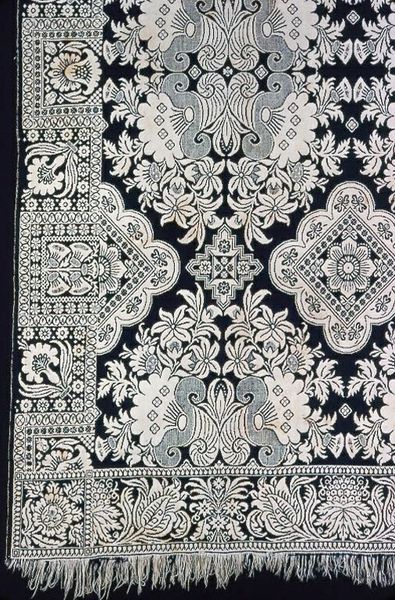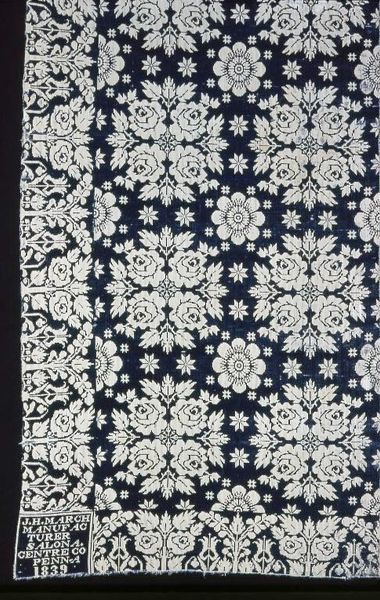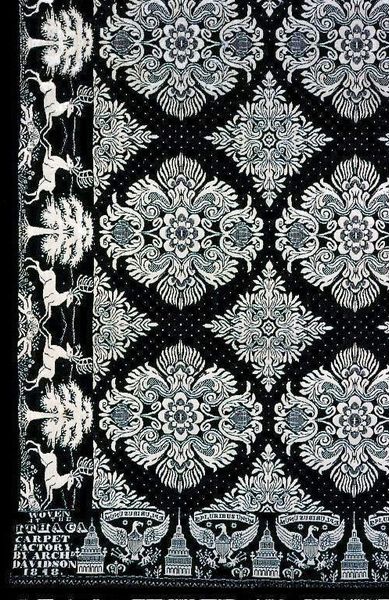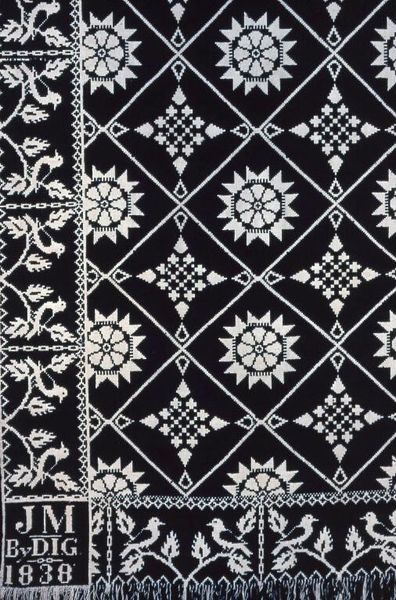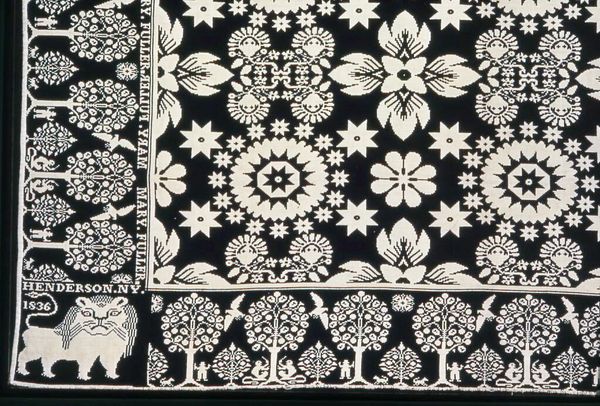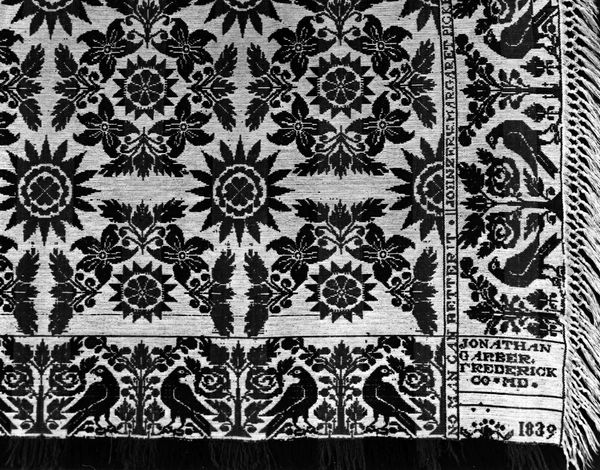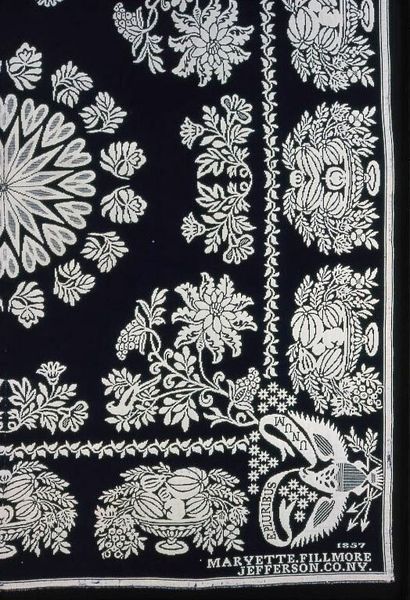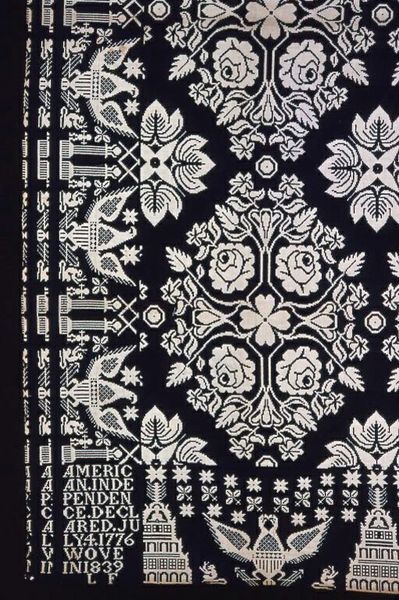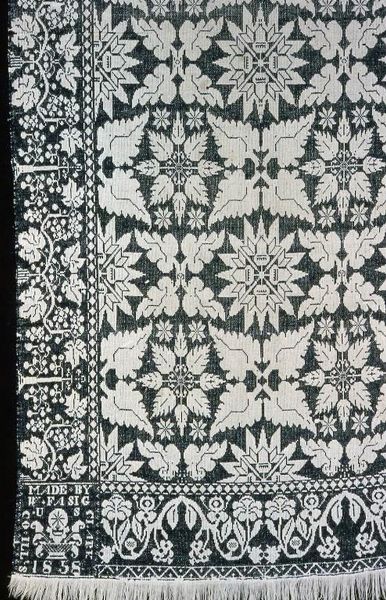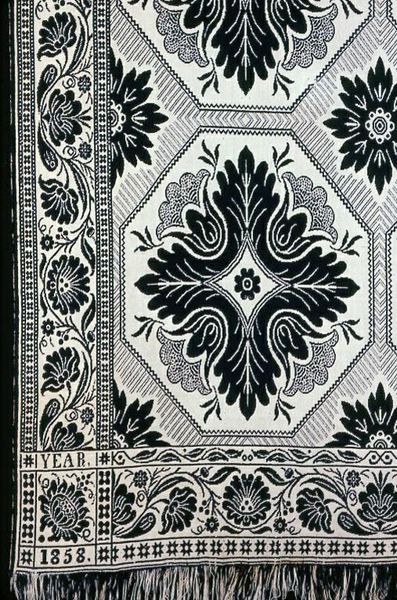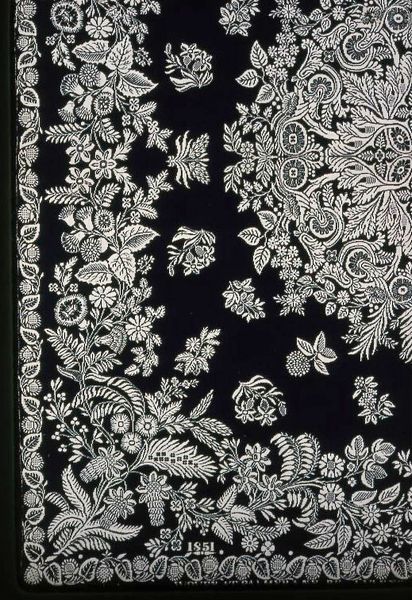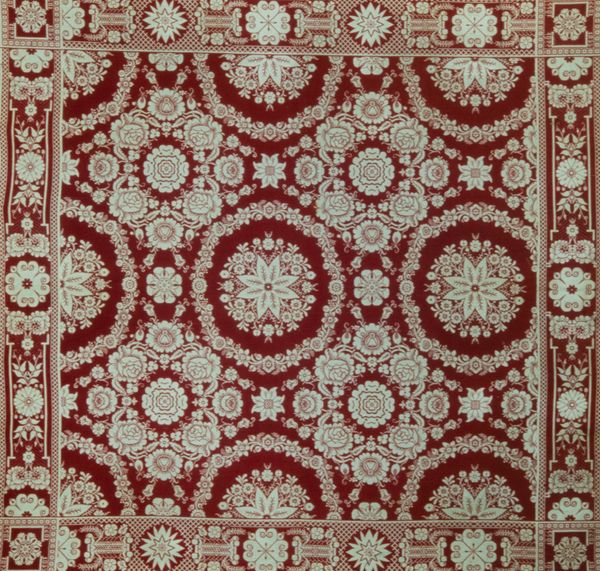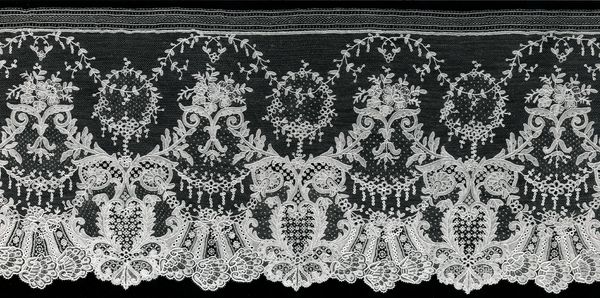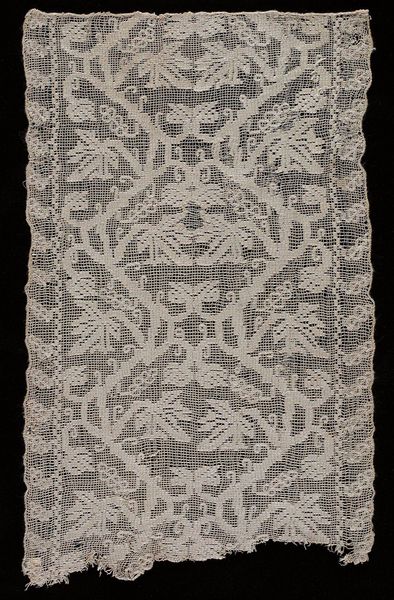
weaving, textile
#
detailed texture
#
weaving
#
textile
#
geometric pattern
#
folk-art
#
geometric
#
decorative-art
Dimensions: 257.4 × 214.6 cm (93 1/2 × 84 1/2 in.) Repeat: 65.4 × 40.6 cm (25 3/4 × 16 in.)
Copyright: Public Domain
Curator: This gorgeous textile is a coverlet woven in 1846 by Abram William Van Doren. Editor: It strikes me immediately as something both incredibly homely and formally striking, almost like a minimalist grid gone wild with botanical ornamentation. The black and white palette gives it this real graphic punch. Curator: Indeed. What's interesting is that the weaver, Van Doren, was working within a tradition. These coverlets, often made of wool, were a staple of 19th-century American folk art. Editor: It reads as a collision between craft and something resembling industrial repetition, seeing “Oakland Co.” iterated across the surface alongside these somewhat saccharine flower motifs. What statement were they making about regional industry in America? Curator: Precisely! They served not only a functional purpose, but also a social one. They were a way to express regional pride, which we see here in the “Oakland Co.” labeling you pointed out. Weaving provided income to families during a time when industry was rapidly shifting, so creating one of these marked the artisan with an entry in a regional economic network. The inscriptions would serve as markers of place and authorship at the time, distinguishing regional identity, or in the best cases, marketing. Editor: I appreciate how utilitarian textiles like this can encode histories of labor and economics. The flowers could also suggest something about women's roles in production and labor—how their work in crafting textiles was both domestic and essential to the economic well-being of families and the larger economy, or to specific class distinctions during that time period. Curator: Absolutely, the repetitive designs speak to the mechanization creeping into the weaving process, hinting at those changing social roles. As decorative objects that were functional, these folk textiles provide very important evidence for this period of change. Editor: It is fascinating how art, even in the form of a humble blanket, reflects and shapes social change. Thank you. Curator: It’s a wonderful object and reveals so much about our history when we engage with its context.
Comments
No comments
Be the first to comment and join the conversation on the ultimate creative platform.
